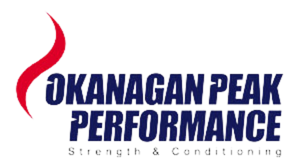Ways to Get Better in Soccer
Hey everyone, Coach Harry here! Yes, Coach Harry, writing a blog post, miracles can happen! This is my first one so please bear with me! And if you have any questions, please forward them on to Coach Mlait, he loves answering all of them, and promises to get back to you within 30 minutes, 24 hours, 7 days a week! 😉
Anyway, why am I writing this? Well it’s a crazy world out there right now, so I wanted to write one for the youth/adolescent soccer players, parents of players, and soccer coaches. I think we all agree it has been stressful in some way or another for everyone, and it is probably harder than ever for the players to progress and get better at football.
I love the game, and I love coaching youth players, especially. As an S&C coach, my goals for each player are to:
- Keep it fun, engaging, and educate them
- Help and guide them with their goals
- Make sure they can play the game well into their 60’s (Injury risk reduction, for my fellow S&C coaches out there)
I’m telling you this because I want you to know that I have a purpose behind everything that I do for the player, which is so important when it comes to coaching an athlete. I’m constantly asking myself why? Why am I making them do this lift? Why am I testing? etc.
Hold up… just so you know I’m English (big shock right), and refuse to call football, soccer! So, from now on you’ll see football in this post, no more soccer nonsense! Anyway, back to the blog…
So, I want to ask you, the player, the kid with the big dreams of one day making it as a pro , a couple of questions…
You all have goals, and you all have things that you can control. So, what are you doing off the pitch to get better? And what are you prepared to do that others aren’t?
It’s a tough one I know, but if you are serious about getting to the next level, NCAA Division 1, U Sport, or whatever that may look like for you, you have to be taking care of yourself off the pitch. While making sure you are prepared to do the things that your teammates aren’t doing. So yes, that may mean you have to miss out on that party with your friends.
It became more relevant to me over the summer, when I was lucky enough to work with 3 high level youth female football players. I would constantly ask them what they were doing outside of their training, to help with recovery and make sure they were ready to go for the next training session.
My questions were pretty simple, and the answers they gave were pretty consistent across the board…
- How much sleep are you getting? 8-9 hours
- How was your nutrition the day before? Always some sort of nutrient rich food, carbs, proteins, and healthy fats.
- What are you doing on your rest days? Hiking, biking, swimming, chilling with friends, some form of active recovery.
- What do you do before bed? Read, hanging with the family, stretch, essentially reducing their screen time as they got closer to the time they go to sleep.
- What extra did you do this week, to make yourself great? This one was probably the hardest for them, so I helped them out by giving them homework each week. They had to research a player of my choosing. They all played in different positions, so I would make sure to give them players that were relevant to where they played on the pitch. The wing back, got someone like Trent Alexander-Arnold, the centre back, Lucy Bronze, and the central midfielder, players like Edgar Davids. They also came back with answers like, taking time out of their day just for themselves/meditation, to reflect on goals, decisions, training, etc.
Success leaves clues… do I think that what they do off of the pitch has a direct correlation to how successful they are on it? DEFINITELY! Are they on a path to achieving their goals? I’d say so. They currently play at a very high level, and I’m certain that they will all be picked up in the next year by top ranking NCAA teams, while a couple of them are being scouted for the national team. As their coach, I can also tell you they brought another level (or 2) of intensity and drive to their training, that we could all learn from and is another topic entirely. OK, so this was meant to be one blog post, but I got a little carried away, and wrote way too much (I’m pretty passionate about football), so you’ll be getting this in 3 posts! SORRY!


